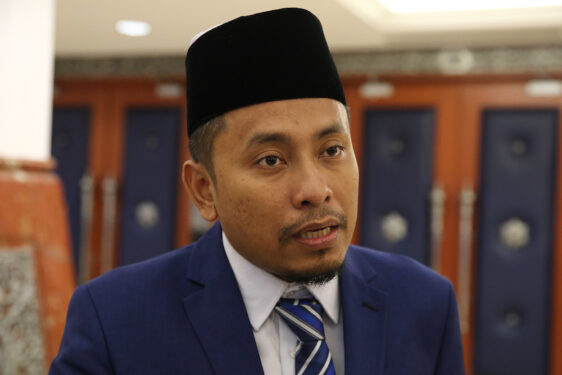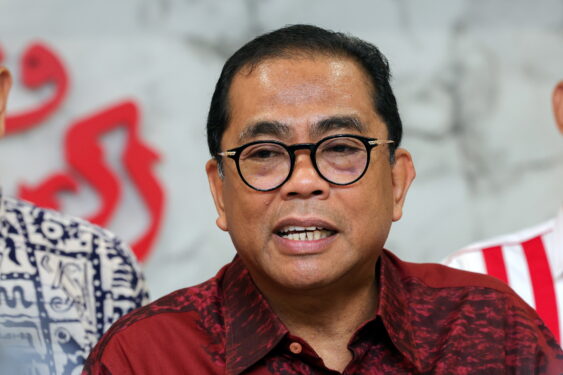THE COVID-19 pandemic revealed that hundred-thousands of Malaysians are living in a precarious financial condition with the majority of wage earners being financially unprepared for retirement.
Job and income losses as well as health challenges have widened divides and exacerbated financial insecurity. Owing to the differing magnitude of the pandemic’s impact, those who were already doing well would fare better than those who are struggling to make end meet.
The health crisis has deeply scarred the already low level of accumulated savings and inadequate retirement savings, exposing vulnerability of the retirement savings of a large number of Employees Provident Fund’s (EPF) contributor.
Low-and middle-income households and individuals’ savers saw the value of their hard-earned nest eggs depleted as the pandemic brought about a loss of employment and income as well as income reduction.
The disrupted employment as well as a sudden and severe income shock amid continued rise in living costs have put those vulnerable households and individuals teetering on the brink of financial insolvency while pushing them to the lower bound of household income trajectory.
The percentage of Malaysians living below poverty line income (RM2,208 per month) had increased to 8.4% (640,000 poor households) in 2020 from 5.6% (405,000 households in 2019); moreover, about 600,000 M40 households (20% of the middle-income group) have slipped to B40 category.
Retirement-deficit savings

Many households with relatively low savings and earnings amid high personal debt have withdrawn from their EPF retirement savings (via i-Lestari, i-Sinar and i-Citra as well as opted for a voluntary cut in the EPF’s contribution rate).
Nevertheless, low interest rate (meaning lower debt service charges) and the automatic loan repayment programme have somehow help to ease the financial burden of high indebtedness households.
While pulling from retirement savings is regrettable – especially for workers in their 30s, 40s and 50s nearing retirement age – it may be largely unavoidable if other options aren’t available. Lower- and middle-wage earners tend to have fewer financial resources at their disposal.
Our concern about the individuals’ retirement-deficit savings to maintain their minimum standard of living in retirement is validated by the findings of the EPF which showed that a high number of members have reduced their savings to levels that cannot guarantee their retirement:
- Close to half of all EPF members (over 7.4 million out of a total member base of 15 million) have made the EPF withdrawals which resulted in a total of RM101 bil being disbursed to provide some financial relief during the pandemic.
- 6.1 million members are having less than RM10,000 in their EPF accounts, of which 3.6 million have less than RM1,000, leaving them vulnerable and unprotected for their retirement.
- Three exceptional withdrawals have left 73% or nearly three quarters of members in a serious state of having inadequate funds to retire above the poverty line. The EPF estimates that members will need to work between an extra four and six years to rebuild the savings that have been utilised during the pandemic.
- A significant drop in the percentage of members meeting the basic savings threshold (RM240,000 at age 55) from 36% in 2020 to an estimated 27% by the end-2021.
- By end-2021, 54% of EPF members aged 54 would have less than RM50,000 in their savings account and that a majority of those who withdrew their entire EPF savings upon reaching age 55 would use it up within two to three years.
Post-pandemic, it is indeed challenging for households and individuals to repair their balance sheet and rebuild precautionary savings. This can only be made possible by continued growing economy, a recovery in employment and increase in wages.
Rebuilding retirement savings
How can the national public policies address this retirement savings deficit? It is much more important for us to look at how we can help our members to restore back their savings post pandemic.
Three key areas for public policy action:
- Strengthen social security safety net, including affordable medicare and housing, the primary structure of retirement income security for low- and middle-income households;
- Expand low- and middle-wage workers’ access to affordable and good investment returns’ retirement plans with professional investment management, risk pooling, and lifetime pay-out; and
- Design a special plan to boost the retirement savings of low income earners struggling with stagnant wages.
It is appropriate to review the EPF Basic Savings quantum given that many contributors who are struggling to make ends meet have been forced to halt or have raided their retirement savings in this pandemic-induced recession.
The EPF Basic Savings quantum was last revised in 2019 when the quantum for the Basic Savings was raised from the current RM228,000 to RM240,000 effective Jan 1, 2019. The amount will be set as the minimum target EPF basic savings members should have upon reaching Age 55.
The Basic Savings quantum is revised periodically according to the minimum pension for public sector employees, or every three years, whichever earlier. The current minimum pension for public sector employees is RM1,000 per month.

The contributors can rebuild their EPF retirement savings through:
- The reinstatement of the contribution rate to 12%-13% from 9%. In 2022 Budget, the employees can opt for a voluntary cut of 2% in EPF contribution rate till June 2022;
- Incentivising contributors to contribute more than the statutory requirement rate (12%-13%). The Government can allow the full amount of EPF contribution allowable for tax-deductible for the income wage earners of RM5,000;
- Higher dividend rate for the low income earners;
- Grow the retirement income over time as EPF members have an option to have a portion of their EPF savings in Account 1 invested in unit trust funds or via private mandates managed by the appointed Fund Managers Institutions (FMI); and
- The EPF can restore and rebuild contributors’ retirement savings by optimising its asset investment allocation and strategy so as to increase higher dividends to contributors.
Bridging gap
It is a good move to get the self-employed, gig workers as well as those in the informal sectors to join the EPF scheme so as to help start precautionary savings and plan for their retirement. We must embrace good and sound financial planning from a young working age.
Raising the retirement age is one of the options to help increase retirement savings while retaining elderly workers in preparing the country for an ageing population and the consequent falling labour force participation and rising cost of pensions.
The question is should raise the retirement age be made mandatory or optional? What are the implications on the tight budget given the current large public sector pension liabilities?
As for the private sector, some companies have already extended the employment service of their retired employees. Some form of tax incentives can be given to companies for allowing employees to work beyond the retirement age limit, subject to both companies and employees to reach a consensus.
The Government can consider to change the retirement landscape through an innovative and self-funding approach to level the playing field at birth which can increase financial security and narrow the racial and retirement wealth gaps.
This can be implemented through an issuance of a 20-year bond for children bon each year. The bond would be eligible for redemption after 20 years. The money will be managed and governed by a special entity. – Nov 8, 2021










